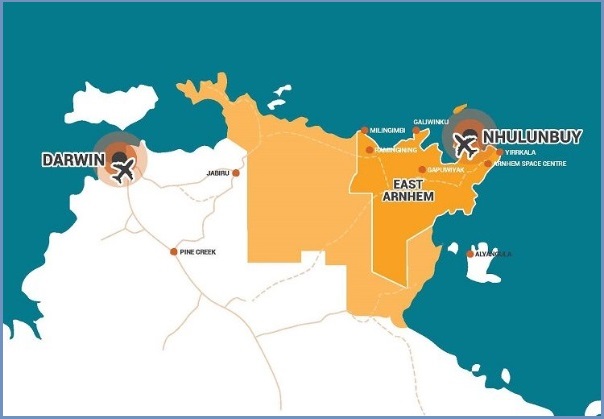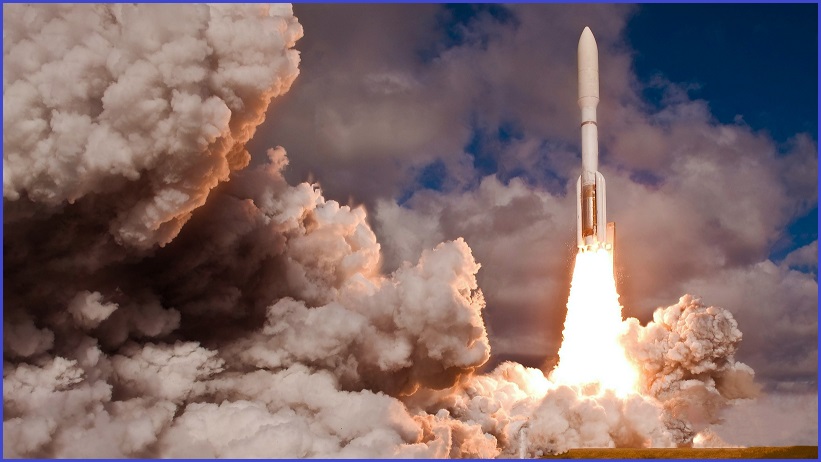When the first of three NASA rockets lifts off from a Northern Territory launch pad on 26 June, it will be the first such launch in Australia since 1995 – and kick off a significant new phase for the fledgling Australian Space Agency (ASA).
The three sounding rockets – which will be launched between 26 June and 12 July from Equatorial Launch Australia’s Arnhem Space Centre (ASC) outside of Nhulunbuy – will allow NASA to carry out a series of night-time astrophysics experiments free from the interference caused by Earth’s atmosphere.
Measuring around 12m long, the Black Brant IX sounding rockets aren’t designed to enter orbit, but instead fly to around 280km in altitude before deploying a parachute and floating back to earth for recovery.
As the first commercial launch site used by NASA outside of the United States, the ASC will be the fifth launch pad – other sites include three in North America and one at the South Pacific’s Kwajalein Atoll – that have already supported nearly two dozen sounding rocket campaigns in recent years.
Designed to study the formation and chemical composition of stars and whether they can support life, the three Australian missions have been in development for years and will investigate heliophysics, astrophysics and planetary science phenomena that can only be seen from the southern hemisphere.

The rockets will include the University of Wisconsin’s X-ray Quantum Calorimeter (XQC); University of Colorado’s Suborbital Imaging Spectrograph for Transition region Irradiance from nearby Exoplanet host stars (SISTINE); and the University of Colorado’s Dual-channel Extreme Ultraviolet Continuum Experiment (DEUCE) spectrograph.
The launches are an “important milestone for Australian innovation”, Minister for Industry and Science Ed Husic said, noting that “one of the things that we want to do is reinvigorate faith in Australian know-how.”
“It’s really important that the brains and capability that we have [are] not only recognised by people offshore,” Husic said, “but for Australians, because we need to put that to work in rebuilding capability in this country.”
“We know just how valuable this advancement is to the growth of the Australian space sector. Space strengthens our economy – including in regional areas – and creates jobs across a diverse range of skillsets.”
Building a domestic space sector
Those skills are being rapidly developed as Australia’s scientific community coalesces around an energised spacetech industry that has moved to engage with global space organisations since its formation in 2017 contemporaneously with the launch of the South Australian Space Industry Centre (SASIC).
The project “is about not just the rocket launches,” Prime Minister Anthony Albanese said in a press conference after the launches were given formal approval to proceed, “but it’s about sending a message to younger Australians – and, indeed, Australians of any age who might be looking at retraining for future careers – of how important science is.”
“We want the next generation to really look at STEM as part of Australia’s future,” Albanese continued, “and that’s why this is an important project.”
The ASC’s Top End location suits space agencies’ preference to launch rockets from equatorial sites, since the earth’s rotational speed is fastest at the equator – around 1,670 km/h – and provides more inertia to help the rockets break free of gravity’s pull.
Developed with the Northern Territory government and local Gumatj Corporation, support for the new site and project has “overwhelmed” NASA Sounding Rockets Program Australian campaign manager Scott Bissett, who noted that “this launch campaign has been several years in the making and we are pleased to see it coming to fruition.”
As part of a steadily-growing Australian space industry that is expected to add 20,000 jobs by 2030, the ASC and other Australian spacetech operators are expected to help the ASA increasingly support NASA and other partners with expertise and services.
The sounding rocket launches have energised ASA head Enrico Palermo, who called them “another signal that Australia is go for launch.”
“The growth of launch-related activities in Australia is helping to open up the full value chain of space activities,” he said, “and will further cement our reputation as a nation that global space players want to do business with.”
NASA last launched rockets from the RAAF Woomera Range Complex in rural South Australia in 1995.










